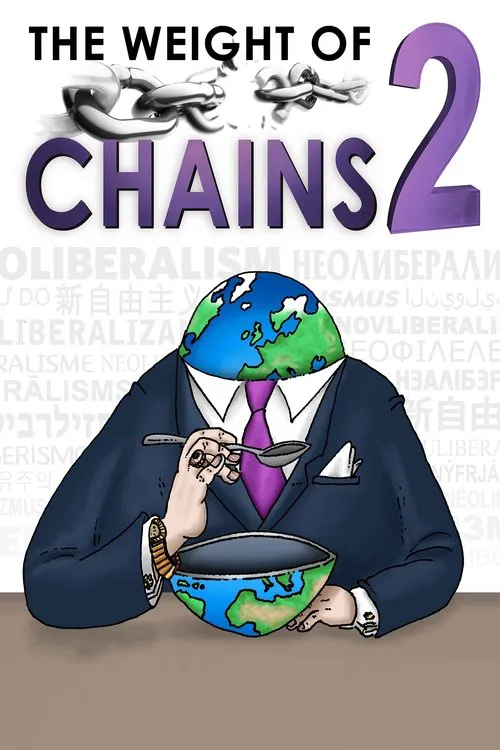The Weight of Chains 2

Plot
The Weight of Chains 2 commences with the exploration of the Washington Consensus, an economic doctrine that became a cornerstone of international financial institutions like the International Monetary Fund (IMF) and the World Bank during the 1990s. This doctrine advocates for economic liberalization, deregulation of markets, privatization, and the minimization of public spending, among other principles. The documentary delves into the consequences of implementing the Washington Consensus in the newly established former Yugoslav republics. Following the dissolution of Yugoslavia, each republic sought to adopt new economic structures. The consensus was that the market-based economies would facilitate unprecedented growth and prosperity. However, reality paints a different picture. Many of the countries, including Bosnia and Herzegovina, Croatia, Kosovo, Macedonia, Montenegro, Serbia, and Slovenia, have struggled with corruption, high unemployment rates, and uneven economic growth. As the years have passed, people in these countries are becoming increasingly disillusioned with the systems imposed upon them after the collapse of socialism. It is in this context that director Boris Malagurski brings together several thought-provoking figures in an attempt to unravel the tangled complexities of neoliberalism and to understand why these expectations of economic salvation have fallen so catastrophically short. The film presents in-depth interviews with several notable thinkers, including Noam Chomsky, an American public intellectual, and Oliver Stone, the renowned filmmaker famous for his films on politics and power. Both individuals bring their perspectives on the shortcomings of the Washington Consensus and the destructive consequences of unbridled capitalism. The film also explores two case studies that offer valuable insights into possible alternatives to the Western economic model. The first example is Ecuador, a small Latin American nation that has taken an unconventional approach to its economy. In the late 1990s, the country was beset on all sides by financial crises caused in part by the debt burden imposed by the IMF and the World Bank. Faced with these challenges, Ecuadorian President, Rafael Correa, adopted a more progressive economic agenda, implementing policies like the nationalization of key sectors, an increase in spending on social welfare programs, and the establishment of the Ecuadorian Central Bank. The Ecuadorian example serves as a compelling counter-narrative to the Washington Consensus. The documentary argues that this approach, which is centered on community participation, state-led economic development, and democratic decision-making, not only helped to lift millions of Ecuadorians out of poverty but also provided a more equitable model for economic growth. The second example discussed is Iceland, a small Nordic nation that has walked a path very different from that of the countries in the Balkans. Iceland's economic history shares some similarities with the newly independent republics in the Balkans, having also been impacted by neoliberal economic reforms during the late 20th century. However, the country's subsequent economic crisis, which was triggered by excessive speculation in the derivatives market, provided an opportunity for profound change. Following its financial collapse in 2009, Iceland took a unique and radical approach to addressing the crisis. Unlike many other countries, it refused to accept a bailout from the IMF and instead chose to restructure its debts, nationalize critical banking institutions, and implement stringent austerity measures. What's significant is that Iceland's path diverged significantly from the Washington Consensus. The documentary reveals that Iceland's unique response was driven by grassroots activism, where citizens and civil society groups pushed for reforms that prioritized the needs of the nation and its people over the interests of international creditors. This case study serves as a compelling proof of concept for the idea that an alternative economic model can be implemented. By highlighting the Icelandic experience, the film demonstrates that it's not impossible to challenge the orthodoxy of Western economic doctrine and that more progressive economic solutions are possible. Through the examination of these two case studies, The Weight of Chains 2 offers a powerful critique of the Washington Consensus and highlights potential paths forward. It reveals that economic systems can be improved and that more just, equitable models are not only desirable but also achievable. Ultimately, the film provides a nuanced exploration of the economic legacies of socialism and the consequences of embracing neoliberalism in the post-Yugoslav republics. By showcasing thought-provoking interviews and examples from Ecuador and Iceland, The Weight of Chains 2 serves as a call to action for policymakers, activists, and citizens to rethink the dominant economic paradigms and seek a more inclusive and people-centered approach to development.
Reviews
Recommendations




